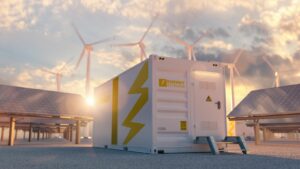
In the world of energy, there’s a growing buzz around the concept of power system optimization. It’s a field that’s gaining traction due to its potential to revolutionize how we generate, distribute, and consume electricity.
Power system optimization is all about making energy systems more efficient, reliable, and sustainable. It involves using advanced algorithms and mathematical models to optimize the operation and planning of power systems.
Dive into the world of power system optimization to understand its importance, the challenges it aims to solve, and the impact it could have on our energy future. Stay tuned as we delve deeper into this fascinating field and explore its potential to transform the energy landscape.
Power System Optimization
Building on the earlier introduction, we delve into the heart of power system optimization and examine its importance and the key components involved.
The Importance of Power System Optimization
 Power System Optimization plays a crucial role in enhancing energy efficiency. By adjusting power generation and distribution based on real-time demands, it ensures reliable and uninterrupted electricity supply. Furthermore, it paves the way for greener energy systems, minimizing the carbon footprint by optimizing the use of renewable energy and reducing wastage. For example, during periods of low demand, it can switch to renewable sources or store excess energy for later use, thereby promoting sustainability.
Power System Optimization plays a crucial role in enhancing energy efficiency. By adjusting power generation and distribution based on real-time demands, it ensures reliable and uninterrupted electricity supply. Furthermore, it paves the way for greener energy systems, minimizing the carbon footprint by optimizing the use of renewable energy and reducing wastage. For example, during periods of low demand, it can switch to renewable sources or store excess energy for later use, thereby promoting sustainability.
Key Components of Power Systems
There are four main components involved in power systems: generation, transmission, distribution, and consumption. Each holds significant importance in the optimization process.
- Generation: This refers to the creation of electricity using various energy resources. Efficient generation ensures maximized energy output with minimal waste.
- Transmission: Transmission lines carry high-voltage energy from the generation plants to distribution substations.
- Distribution: Distribution involves lowering the voltage of electricity at substations and delivering it to consumers.
- Consumption: The final stage of power system involves the use of electricity by consumers.
Methods and Techniques for Power System Optimization
Power system optimization brings a wide array of methods and techniques into play. They range from traditional ones, steeped in mathematical theories, to advanced ones, intertwined with cutting-edge technology.
Traditional Optimization Techniques
 Traditional techniques primarily involve mathematical modeling. Here, deterministic models like linear and nonlinear programming play critical roles. For instance, stochastic programming provides solutions in situations of uncertainty, while dynamic programming offers optimal solutions over a timeframe.
Traditional techniques primarily involve mathematical modeling. Here, deterministic models like linear and nonlinear programming play critical roles. For instance, stochastic programming provides solutions in situations of uncertainty, while dynamic programming offers optimal solutions over a timeframe.
Consider linear programming (LP). It’s a technique that tackles problems through mathematical formulations. Utilities often employ LP in their day-to-day operations, making optimal decisions for power generation and distribution. Similarly, nonlinear programming (NLP) lends itself well to complex power systems. Here’s an example: thermal generation costs typically follow nonlinear curves.
Advanced Optimization Techniques
Turning to advanced techniques, these meld innovation and technology. They include swarm intelligence, evolutionary algorithms, and neural networks. Broadly speaking, these techniques embrace the complexity and uncertainty typical of power systems.
Take the particle swarm optimization (PSO) technique. It’s derived from the social behaviour of bird flocking or fish schooling. In power system optimization, PSO successfully operates within the dynamic and uncertain environment. To cite another example, Genetic Algorithm (GA) mimics the process of natural evolution, and in power system optimization, it locates optimal or near-optimal solutions even in large and complex search spaces. Another advanced technique involves Artificial Neural Networks (ANN).
Application of Power System Optimization in Renewable Energy
 Power system optimization’s impact on renewable energy is undeniable. It’s the key to unlocking the full potential of this sustainable energy source. By utilizing advanced algorithms and mathematical models, it’s possible to harness the power of renewable energy more efficiently and effectively. This optimization extends to all aspects of power systems, from generation to consumption, ensuring a balanced and reliable energy supply. Techniques such as swarm intelligence, evolutionary algorithms, and neural networks are paving the way for dynamic solutions to the energy sector’s challenges. As the world continues to evolve, so too does the application of power system optimization in renewable energy.
Power system optimization’s impact on renewable energy is undeniable. It’s the key to unlocking the full potential of this sustainable energy source. By utilizing advanced algorithms and mathematical models, it’s possible to harness the power of renewable energy more efficiently and effectively. This optimization extends to all aspects of power systems, from generation to consumption, ensuring a balanced and reliable energy supply. Techniques such as swarm intelligence, evolutionary algorithms, and neural networks are paving the way for dynamic solutions to the energy sector’s challenges. As the world continues to evolve, so too does the application of power system optimization in renewable energy.
